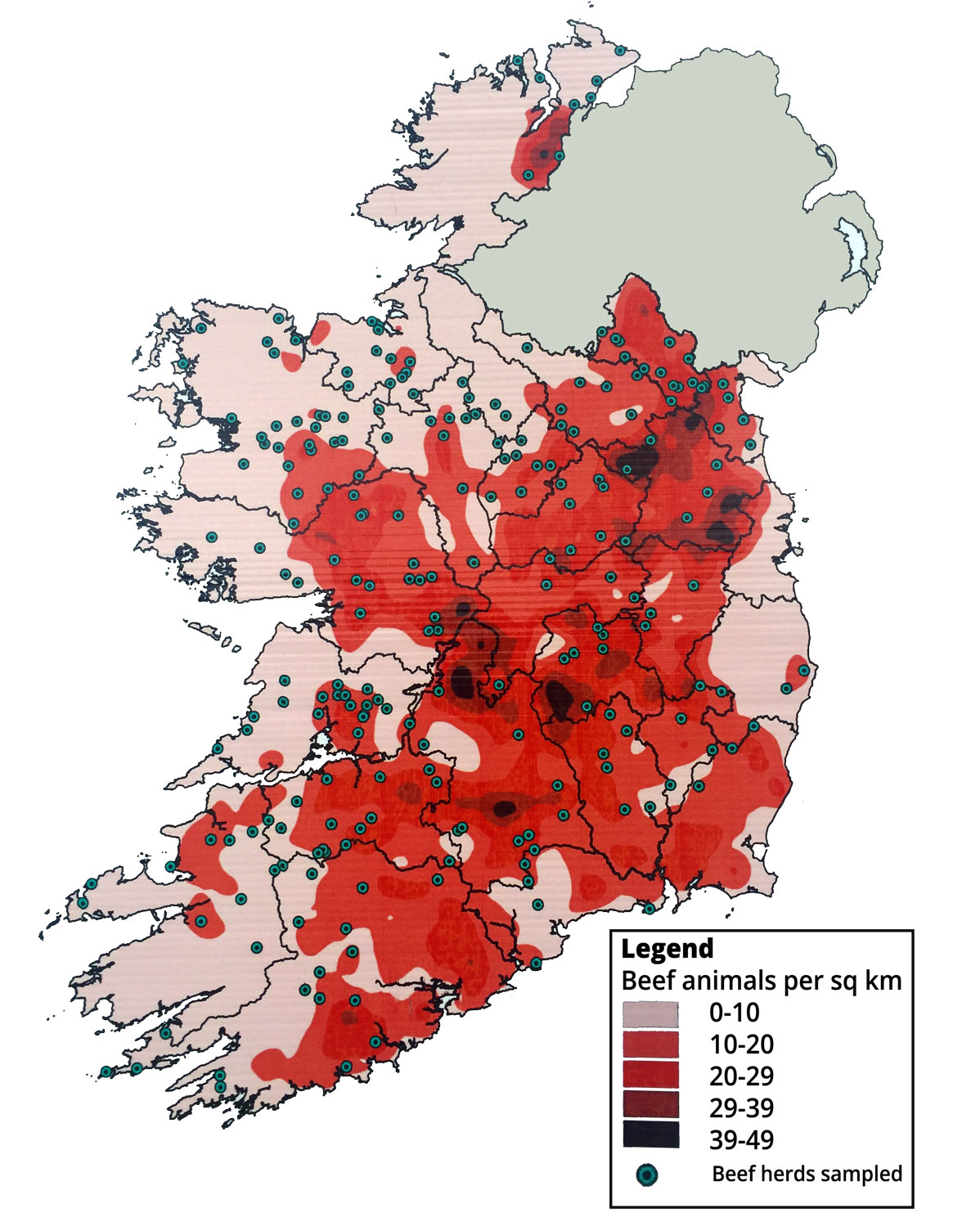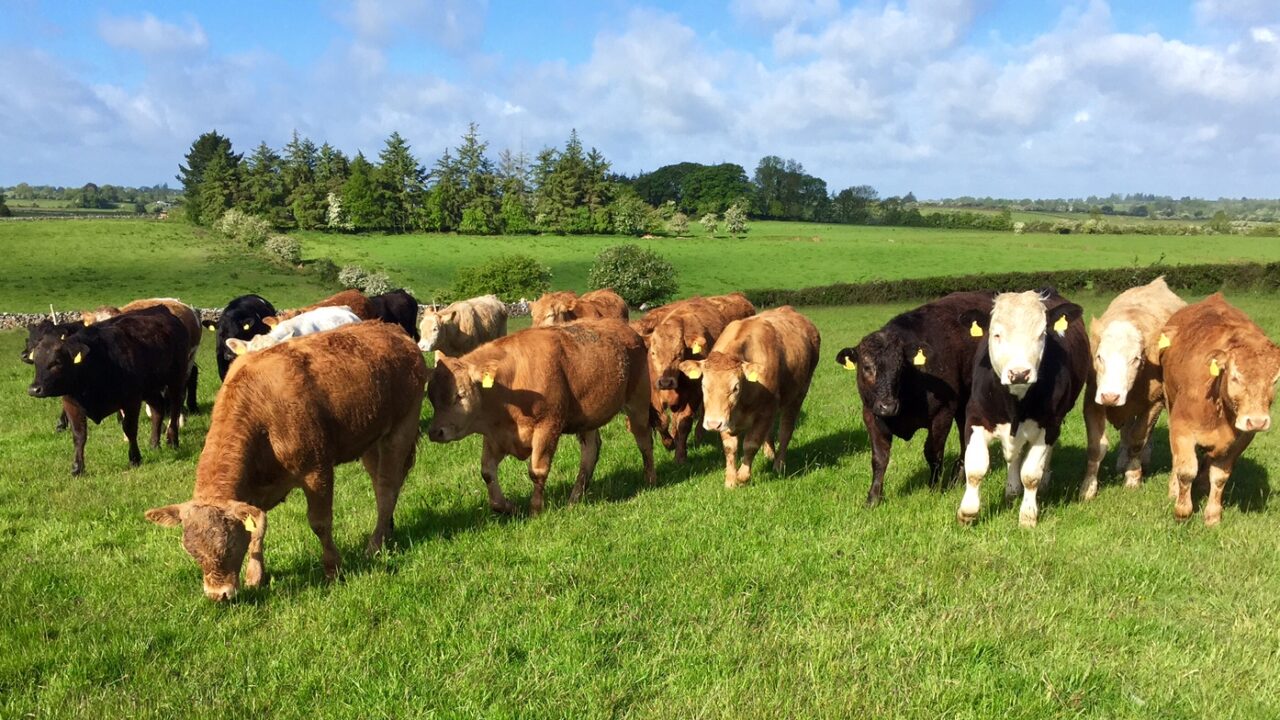In a study of 250 beef herds across the country, 90% of herds tested positive for liver fluke last winter according to Teagasc.
The herds were chosen based on geographical location and herd size to give the best representation of beef herds nationally.
Six to seven cows in each herd were tested, with close to 65% of the cows sampled testing positive for liver fluke.

A heat map of beef animals infected with liver fluke per square kilometre
Riona Sayers, a herd health and research officer for Teagasc, advised farmers at Beef 2016 to test their herds for liver fluke and not to underestimate the effects it can have on the overall herd health.
“We visited over 300 beef farmers in the country and took samples for liver fluke, we were actually astounded at the fantastic quality of the animals that we met.
“But I would imagine there is a lot of extra feed going in there to make up for the amount of liver fluke and the resources that the liver fluke are taking up out of the animal,” said Sayers.
Forget this wet farm, dry farm talk. There’s pretty much no where dry enough in this country to avoid liver fluke.
Minimising access to snail habitats which allows the liver fluke to complete its cycle is important, and if you don’t have liver fluke, don’t buy it in was the key advice Sayers was keen for farmers to take home.
Liver fluke can affect cattle of all ages while farmers can reduce the risk of infection by improving drainage and fencing off wet land where possible to restrict snail habitats on farms.
A strategic fluke dose in early to mid-summer will reduce the number of eggs shed can be useful on farms with a high fluke risk.
The necessity of dosing cattle of any age for fluke at grass will depend on the farm fluke risk.
Farmers can assess their farms fluke risk by looking at
- the suitability of the land for snail habitats – wet farms are at highest risk.
- the history of clinical cases of fluke on the farm.
- previous faecal egg counts results and liver results from meat factories.
- weather; mild wet weather increases the risk of fluke.
- fluke forecasts.
